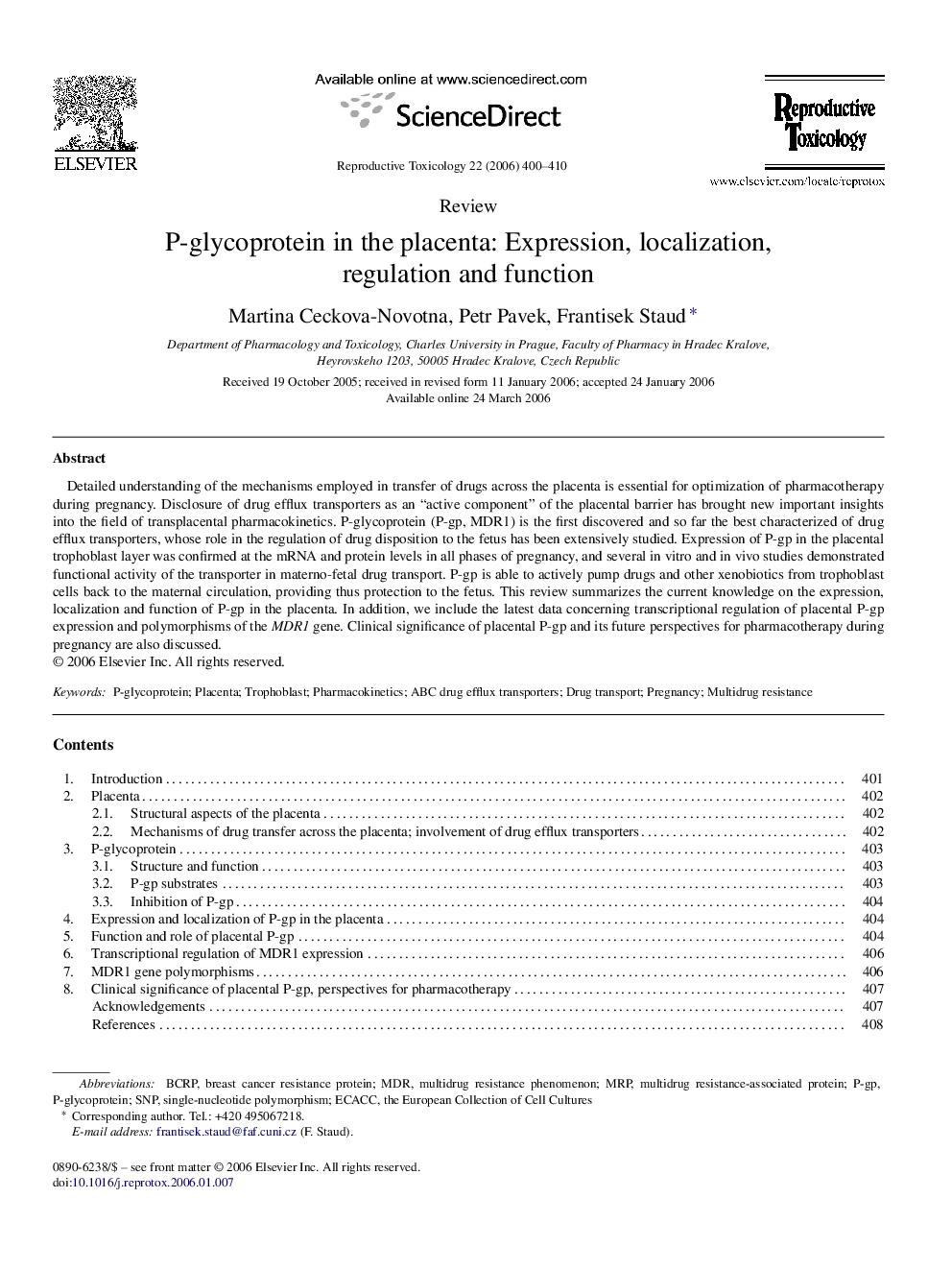| Article ID | Journal | Published Year | Pages | File Type |
|---|---|---|---|---|
| 2595064 | Reproductive Toxicology | 2006 | 11 Pages |
Detailed understanding of the mechanisms employed in transfer of drugs across the placenta is essential for optimization of pharmacotherapy during pregnancy. Disclosure of drug efflux transporters as an “active component” of the placental barrier has brought new important insights into the field of transplacental pharmacokinetics. P-glycoprotein (P-gp, MDR1) is the first discovered and so far the best characterized of drug efflux transporters, whose role in the regulation of drug disposition to the fetus has been extensively studied. Expression of P-gp in the placental trophoblast layer was confirmed at the mRNA and protein levels in all phases of pregnancy, and several in vitro and in vivo studies demonstrated functional activity of the transporter in materno-fetal drug transport. P-gp is able to actively pump drugs and other xenobiotics from trophoblast cells back to the maternal circulation, providing thus protection to the fetus. This review summarizes the current knowledge on the expression, localization and function of P-gp in the placenta. In addition, we include the latest data concerning transcriptional regulation of placental P-gp expression and polymorphisms of the MDR1 gene. Clinical significance of placental P-gp and its future perspectives for pharmacotherapy during pregnancy are also discussed.
